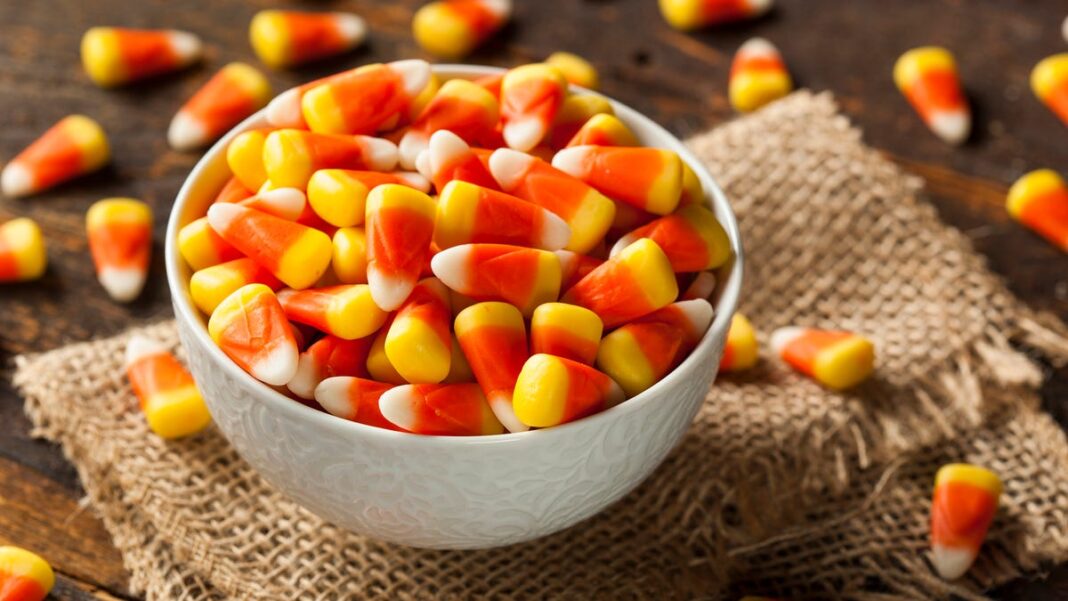Candy Corn: Made from Bones and Bugs? Here’s What You Should Know About This Halloween Favorite.
This Wednesday marks National Candy Corn Day, a perfect occasion to enjoy this treat—whether you’re indulging solo with a new bag or delighting friends with a Halloween-themed dessert featuring the colorful kernels.
Interestingly, while National Candy Corn Day falls on October 30, this sugary snack doesn’t actually originate from Halloween. It was long regarded as an inexpensive candy accessible to kids throughout the year.
Here are some intriguing insights about candy corn, a sweet that has both dedicated fans and vocal critics.
What’s the Best Way to Enjoy Candy Corn?
There are various methods to savor candy corn, and enthusiasts have strong opinions about their preferences. Research from the National Confectioners Association reveals that 57% of people munch on the entire piece at once, 28% begin with the white tip, and 15% prefer starting with the orange base.
Gen Xers Prefer Candy Corn
Following them were Baby Boomers (56%), Gen Z (49%), and Millennials (46%).
What Ingredients Are in Candy Corn?
Candy corn consists mainly of sugar, corn syrup, salt, sesame oil, honey, artificial flavors, food coloring, gelatin, and confectioner’s glaze. However, some of these familiar names might come as a surprise to many.
One key ingredient, gelatin, is an animal-derived product packed with protein and is made from animal bones, cartilage, and skin. Manufacturers extract collagen, which connects muscles, bones, and skin, and convert it into gelatin that is flavorless and colorless, as reported by MedicalNews Today.
Moreover, the shiny appearance of candy corn comes from confectioner’s glaze, derived from insect secretion. Also called shellac, this ingredient originates from the waxy resin produced by female lac bugs, providing a protective coating for their eggs.
According to Treehugger, a publication focused on sustainability, female lac bugs ingest sap from tree bark while laying their eggs. The sap undergoes changes in the bug’s body and, once secreted, hardens in the air to create protective shells for the eggs. This hardened form is what is collected to produce shellac.
While the presence of bug secretion in candy may raise eyebrows, it’s actually quite prevalent. Other popular candies like Junior Mints, Whoppers, Milk Duds, Raisinets, and Tootsie Rolls also contain confectioner’s glaze.
Is Candy Corn a Healthy Snack?
Candy corn does not offer nutritional benefits, but enjoying a few pieces occasionally as part of a balanced diet should be fine.
A serving of Jelly Belly’s Candy Corn (25 pieces) contains 100 calories, equating to about 4 calories per kernel, with 20 grams of sugar.
Although there can be slight variations among brands, the nutritional content remains relatively similar. For example, a serving of Brach’s Classic Candy Corn (15 pieces) has 110 calories, which means each piece has around 7 calories and contains 23 grams of sugar.
The American Heart Association recommends that men limit their intake of added sugars to 36 grams daily, while women should aim for no more than 25 grams.
The History of Candy Corn
Candy corn has been around for over 140 years.
According to the History Channel, George Renninger, an employee at the Wunderle Candy Company in Philadelphia, created candy corn in the 1880s. However, it gained widespread fame only when Goelitz Candy Company, now known as Jelly Belly, promoted the treat in 1898.
Originally, Goelitz marketed the candy under the name “Chicken Feet,” as the idea of corn being for eating wasn’t common among Americans before World War I. For many years, candy corn was sold as “penny candy,” an affordable delight for all kids to enjoy.
Candy corn didn’t become associated with Halloween until the 1950s, as before then, candy and Halloween were not closely linked.

